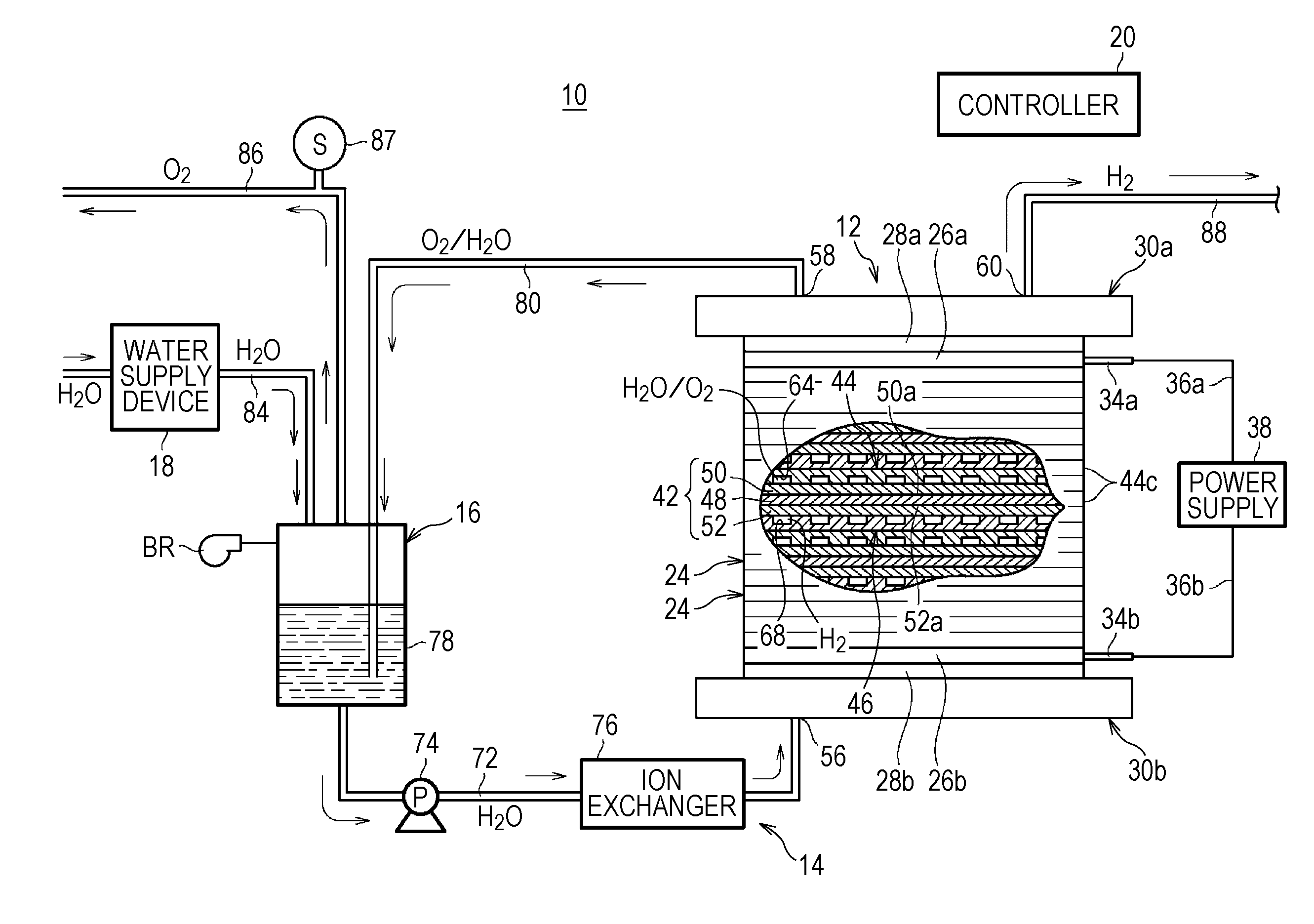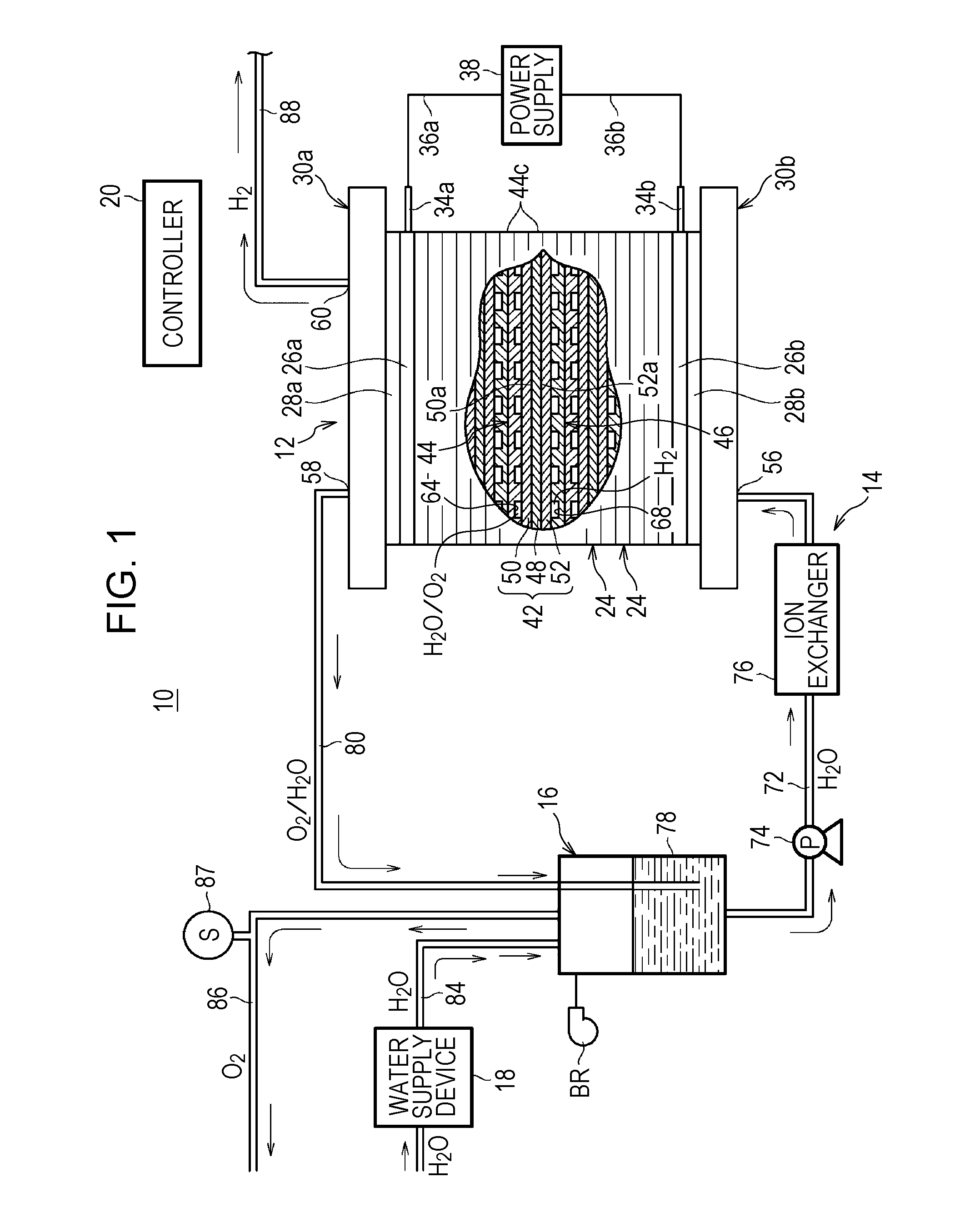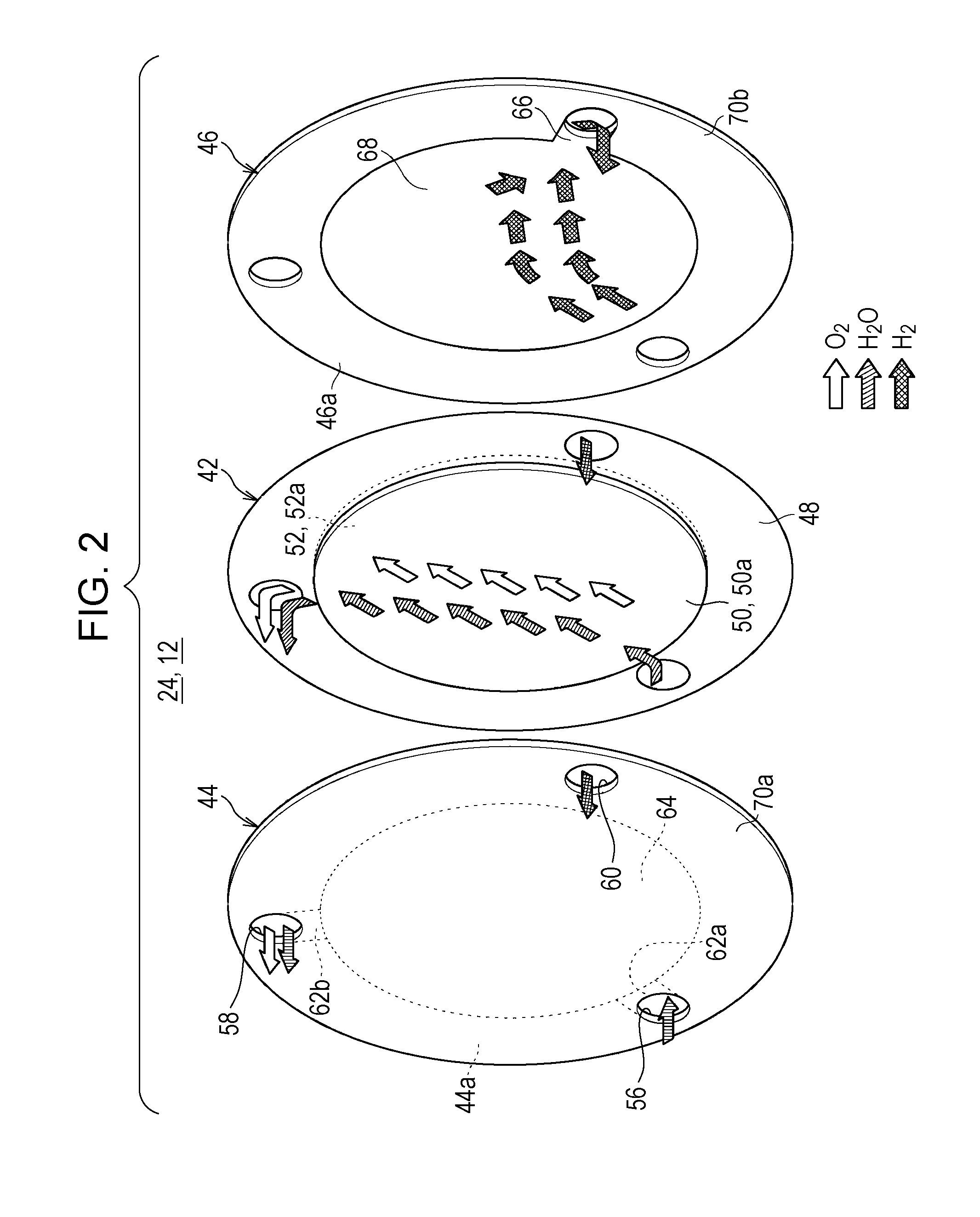Method for operating water electrolysis system
a technology of electrolysis system and water electrolysis, which is applied in the direction of electrolysis components, instruments, optics, etc., can solve problems such as uneconomical problems
- Summary
- Abstract
- Description
- Claims
- Application Information
AI Technical Summary
Problems solved by technology
Method used
Image
Examples
first embodiment
[0021]As shown in FIG. 1, a water electrolysis system 10 to which an operating method according to the present invention is applied includes a water electrolysis apparatus 12 which generates oxygen and high-pressure hydrogen (hydrogen under higher pressure than normal pressure) by electrolysis of water (pure water), a water circulation apparatus 14 which circulates the water in the water electrolysis apparatus 12, a gas-liquid separation apparatus 16 which separates the oxygen and hydrogen (gas components) discharged from the water electrolysis apparatus 12 from water in the water circulation apparatus 14 and stores the water, a water supply device 18 which supplies pure water produced from commercial water to the gas-liquid separation apparatus 16, and a controller (control section) 20.
[0022]The water electrolysis apparatus 12 includes a stack of a plurality of unit cells 24. In addition, a terminal plate 26a, an insulating plate 28a, and an end plate 30a are disposed at an end in ...
second embodiment
[0051]In the second embodiment, a control map for driving the circulating pump 74 which constitutes the water circulation apparatus 14 is previously stored in the controller 20. The control map is based on a relation between the concentration of hydrogen remaining on the first flow passage 64 side and the operating time of the water circulation apparatus 14 after the water electrolysis apparatus 12 is stopped or based on a relation between the concentration of hydrogen remaining on the first flow passage 64 side and the revolution speed of the circulating pump 74 constituting the water circulation apparatus 14.
[0052]Therefore, processes from the system power supply is turned on (Step S21) to Step S29 are the same as Step S1 to Step S9 of the first embodiment. Further, after the release of pressure is completed (“YES” in Step S29), the operation proceeds to Step S30, and it is determined whether or not control based on the control map stored in the controlled 20 is completed.
[0053]Wh...
PUM
| Property | Measurement | Unit |
|---|---|---|
| porosity | aaaaa | aaaaa |
| porosity | aaaaa | aaaaa |
| pressure | aaaaa | aaaaa |
Abstract
Description
Claims
Application Information
 Login to view more
Login to view more - R&D Engineer
- R&D Manager
- IP Professional
- Industry Leading Data Capabilities
- Powerful AI technology
- Patent DNA Extraction
Browse by: Latest US Patents, China's latest patents, Technical Efficacy Thesaurus, Application Domain, Technology Topic.
© 2024 PatSnap. All rights reserved.Legal|Privacy policy|Modern Slavery Act Transparency Statement|Sitemap



